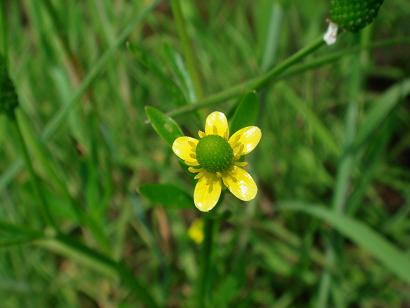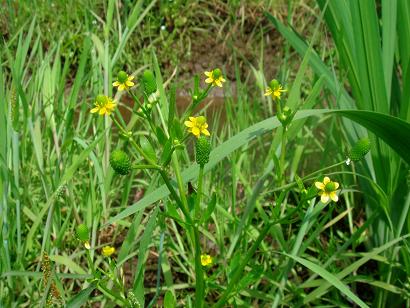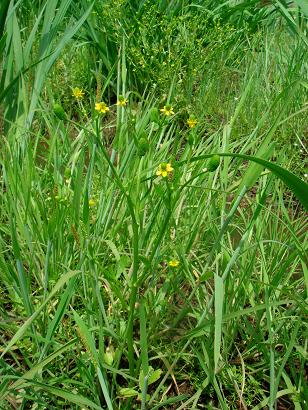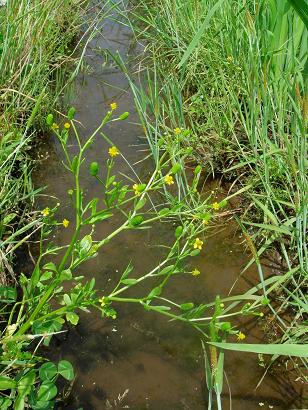 |
 |
 |
|---|---|---|
| May 2007 at rice paddy |
May 2007 at rice paddy |
May 2007 at rice paddy |
| Family | Ranunculaceae |
| Subfamily | Ranunculoideae |
| Tribe | Ranunculeae |
| Scientific name | Ranunculus sceleratus L. |
| Synonyms | Hecatonia scelerata (L.) Fourreau; Ranunculus eremogenes Greene; Ranunculus eremogenes Greene var. degener Greene; Ranunculus eremogenes Greene var. longissimus Lunell; Ranunculus eremogenes Greene var. pilosulus Greene; Ranunculus eremogenes Greene var. pubescens Lunell; Ranunculus sceleratus L. subsp. multifidus (Nuttall ex Torrey & A. Gray) Hultén; Ranunculus sceleratus L. subsp. typicus A. Löve & D. Löve; Ranunculus sceleratus L. var. eremogenes (Greene) Garrett; Ranunculus sceleratus L. var. longissimus (Lunell) L. D. Benson; Ranunculus sceleratus L. var. multifidus Nuttall ex Torrey & A. Gray; Ranunculus sceleratus L. var. typicus L. D. Benson |
| Common name | (Japanese common name) ta-garashi (タガラシ, 田芥子 [meaning: rice paddy mustard]) |
| (English common name) celery-leaved ache, blister buttercup, celery-leaf buttercup, celery-leaf crowfoot, cursed crowfoot, marsh crowfoot | |
| Distribution | (Japan) Honshu, Shikoku, Kyushu, Okinawa |
| (Other nations) Eurasia, Egypt, Morocco, Tunisia, Canada, USA | |
| Habitat | Rice paddy, swamp |
| Chromosomal number | 2n=16, 32 |
| Description | Plants 30-60cm tall. Leaves 3-7cm wide. Flowers pedicels 1-2.5cm long, 5 calyx lobes 3.5-4mm long, 5 yellow petals each 3.5-4mm long, flowering in April to May. Fruits 1-1.2mm long. Winter annual plants. |
| Reference | Ranunculus sceleratus L. |
| Ranunculus sceleratus Linnaeus | |
| Ranunculus sceleratus L. | |
| Anti-microbial compositions (US Patent 6951833/2005) | |
| Method to ascertain the quality of herbs (US Patent 6855343/2005) | |
| Use of anemonin for treating aseptic inflammations (US Patent 7297353/2007) | |
| Medicament for treating aseptic inflammations containing anemonin as effective component (US Patent 20030064117) | |
| Composition containing feverfew extract and use thereof (US Patent 20030077343) |
 |
 |
 |
|---|---|---|
| May 2007 at rice paddy |
May 2007 at rice paddy |
May 2007 at rice paddy |
 |
 |
|---|---|
| May 2007 at rice paddy |
May 2007 at rice paddy |